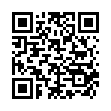|
This article is cited in 2 scientific papers (total in 2 papers)
Artificial Intelligence, Knowledge and Data Engineering
Application of brain-computer interfaces in assistive technologies
F. Gundelakha, L. Stankevichb, K. Sonkinc, G. Nagornovad, N. Shemyakinad
a Peter the Great St.Petersburg Polytechnic University (SPbPU)
b St. Petersburg Institute of informatics and Automation of the Russian Academy of Science (SPIIRAS)
c Tel Aviv University
d Sechenov Institute of Evolutionary Physiology and Biochemistry of the Russian Academy of Science (IEPhB RAS)
Abstract:
In the paper issues of brain-computer interface applications in assistive technologies are considered in particular for robotic devices control. Noninvasive brain-computer interfaces are built based on the classification of electroencephalographic signals, which show bioelectrical activity in different zones of the brain. Such brain-computer interfaces after training are able to decode electroencephalographic patterns corresponding to different imaginary movements and patterns corresponding to different audio-visual stimulus. The requirements which must be met by brain-computer interfaces operating in real time, so that biological feedback is effective and the user's brain can correctly associate responses with events are formulated. The process of electroencephalographic signal processing in noninvasive brain-computer interface is examined including spatial and temporal filtering, artifact removal, feature selection, and classification. Descriptions and comparison of classifiers based on support vector machines, artificial neural networks, and Riemann geometry are presented. It was shown that such classifiers can provide accuracy at the level of 60–80% for recognition of imaginary movements from two to four classes. Examples of application of the classifiers to control robotic devices were presented. The approach is intended both to help healthy users to perform daily functions better and to increase the quality of life of people with movement disabilities. Tasks to increase the efficiency of technology application are formulated.
Keywords:
assistive technologies, robotic devices, brain-computer interfaces, electroencephalography, imaginary movements, classification methods, artificial neural networks, support vector machine, Riemann geometry.
Received: 31.10.2019
Citation:
F. Gundelakh, L. Stankevich, K. Sonkin, G. Nagornova, N. Shemyakina, “Application of brain-computer interfaces in assistive technologies”, Tr. SPIIRAN, 19:2 (2020), 277–301
Linking options:
https://www.mathnet.ru/eng/trspy1099 https://www.mathnet.ru/eng/trspy/v19/i2/p277
|

| Statistics & downloads: |
| Abstract page: | 179 | | Full-text PDF : | 75 |
|




 Contact us:
Contact us: Terms of Use
Terms of Use
 Registration to the website
Registration to the website Logotypes
Logotypes








 Citation in format
Citation in format 
